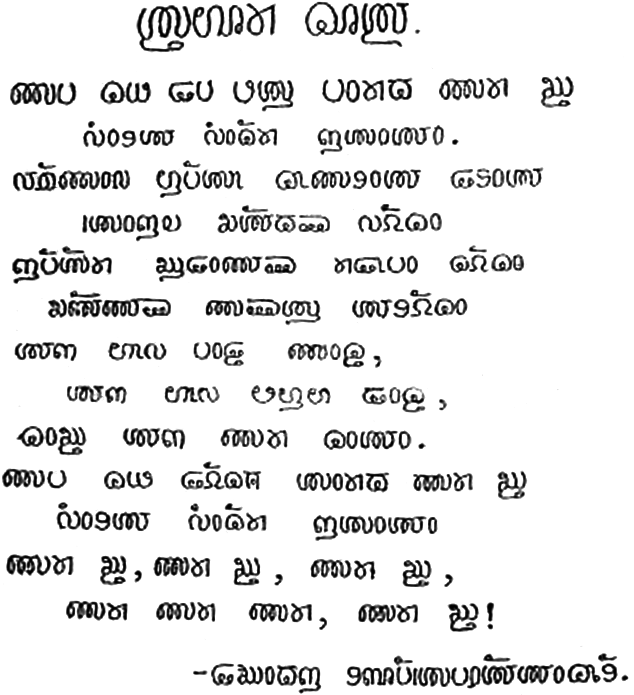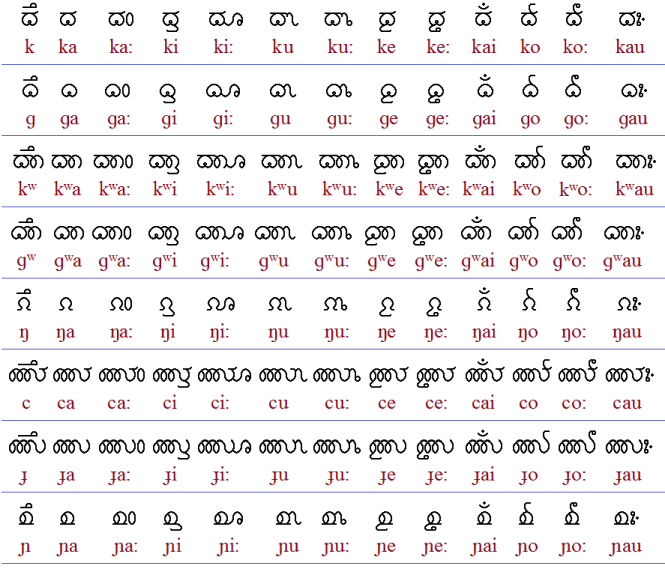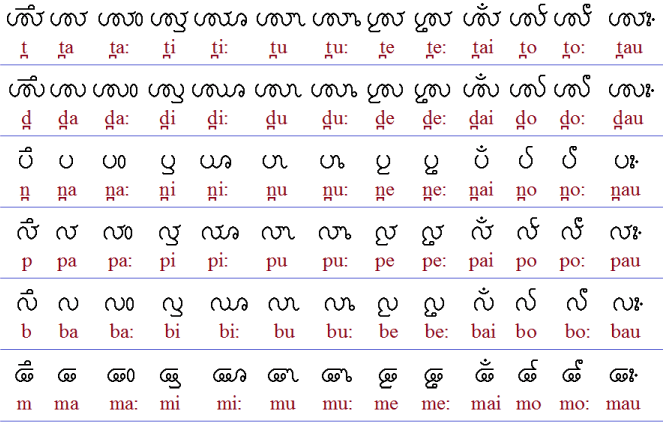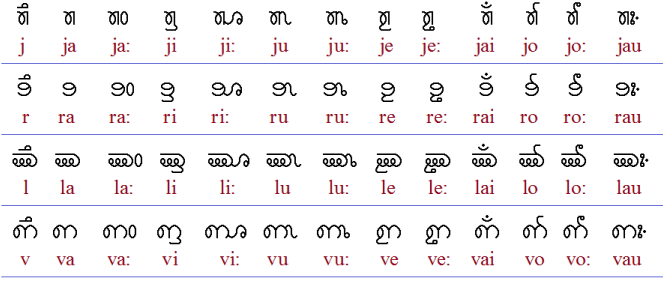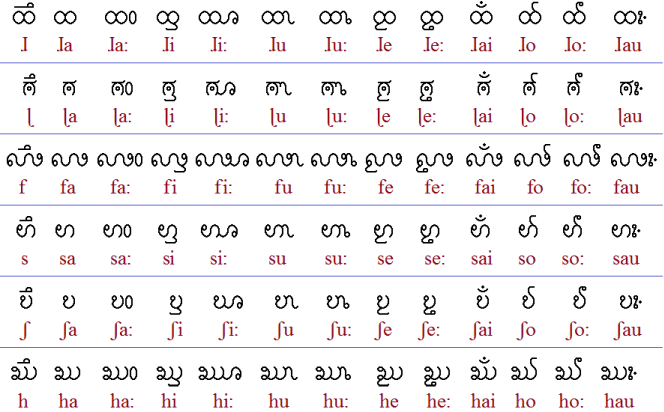This attractive script was invented by Yogesh of Kadasoley in 1978 for Badaga, a South Dravidian language spoken by people in the Nilgiri Hills, Tamil Nadu. It is inspired by neighbouring Brahmi-style scripts (Kannada and Tamil), but has many new letter shapes. Information was gathered from this Badaga website, then Mattias Persson made clearer charts.
Consonants
Each letter has an inherent /a/, which vowel may be changed by adding vowel marks (see below). Unvoiced plosives are formed regularly by the addition of a stroke to the top right of a voiced plosive.
Vowels
There are special letters for initial/independent vowels. Otherwise vowel marks are attached or placed after, below or above their consonant. There is a mark to silence the inherent /a/.

Other constructions
To show aspiration of a plosive, a dot is placed above it:
To show post-consonantal /r/, a line is placed before the syllable:
To show nasalization of a vowel, an arch is placed above the syllable:
Charts of syllables
Here Mattias has drawn out the syllabic possibilities in full. Most constructions are regular.
Example
Here is a cleaned version of a handwritten text, showing the script in action (original at badaga.co).
